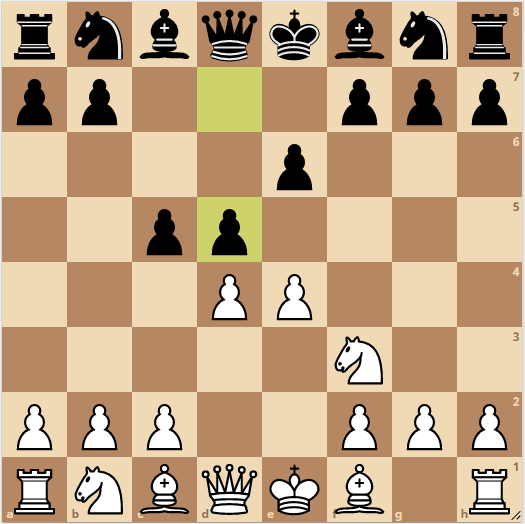28 Jun Sicilian Marshall Counterattack – A Rare Line in the Sicilian Defense
What is the Marshall Counterattack?
Sicilian Marshall Counterattack is a rare line in the Sicilian Defense where Black does not take the White pawn on d4 in the opening. The attack was named after the American chess master Frank Marshall, who specialized in the Ruy Lopez Opening.
- e4 c5
- Nf3 e6
- d4 d5

Here, instead of playing cxd4 on the 3rd move, Black plays d5. So white has two options now:
Variation – 4.e5
If White plays e5 on the 4th move, the game will transpose into the French Defense. Compared to the conventional French Variation, the difference in this variation is that Black can immediately capture the pawn on d4 by playing cxd4.
If White plays Nxd4, White’s pawn on e5 becomes slightly weak. Hence, players prefer to play Bd3 and sacrifice their pawn to develop the pieces. The idea here is for White to castle and allow the White Rook to come to the e1 square to protect the e5 pawn.
White also can develop on the Queenside and have the dark square Bishop go to b2, and the Knight go to d2 and then b3, increasing the pressure on Black’s pawn on d4, making it difficult for Black to protect that pawn.
- e5 cxd4
- Bd3
Variation – 4. exd5
Here White plays exd5 after d5, and this variation also looks somewhat like the French Defense.
If Black plays Qxd5:
White will play Nc3 and gain tempo by developing the Knight and simultaneously attacking the Queen. The Black Queen will have to go back to d8 as Qc6 would lead to a Queen and King pin. White now has an advantage with the two developed Knights. To avoid this disadvantage, Blak has to play exd5 instead of Qxd5.
If Black plays exd5:
This position looks like the French Defense opening position. White would play Nc3 on the next move, followed by Black developing the Knight and playing Nf6. White can now play Bg5, pinning the knight and adding pressure on the d5 pawn. Black will have to play Be6 to defend this pawn. White can now play Bb4+ to develop the Bishop while simultaneously giving a check, Black will protect this check with Nc6, and then White can castle kingside. Black also wants to castle, because of which Black will play Be7, and now White can play dxc5.
If Black captures the c5 pawn by playing Bxc5, this allows White to play Bxf6. If Black plays Qxf6, Black loses the pawn on d5, and if Black plays gxf6, Black ends up with doubled pawns and an open kingside. This provides White with a major advantage.
So players usually avoid Bxc5; instead, they castle, hoping to capture the pawn on c5 later in the game. White now has a clever move which is Bxc6, after which White can simply play b4 protecting the c5 pawn.
- e4 c5
- Nf3 e6
- d4 d5
- exd5 exd5
- Nc3 Nf6
- Bg5 Be6
- Bb4+ Nc6
- 0-0 Be7
- dxc5 0-0
- Bxc6 bxc5
- b4

Variation – 5.Bb4+
White can play Bb4+ on the 5th move. Black will play Nc6 followed by White castling.
Black can now play a move like Bd6, after which White can play a beautiful move – c4, gaining control over the center. Black will play Nge7 to protect the pawn, after which the d5 pawn can be traded. White can then play Bg5, and White now has a much better position than Black.
Instead of Bd6, Black should play Nf6. White can now play Nc3 followed by Bg5 and castling, or White could play Ne5, putting pressure on the c6 Knight. Black must focus on castling soon as White is threatening Re1, which would create major pressure in the center.
Statistics
The following are the statistics according to: Chess.com
| Sr. No | Result | Rate |
|---|---|---|
| 1 | White Wins | 49.7% |
| 2 | Black Wins | 24.4% |
| 3 | Draws | 25.9% |



